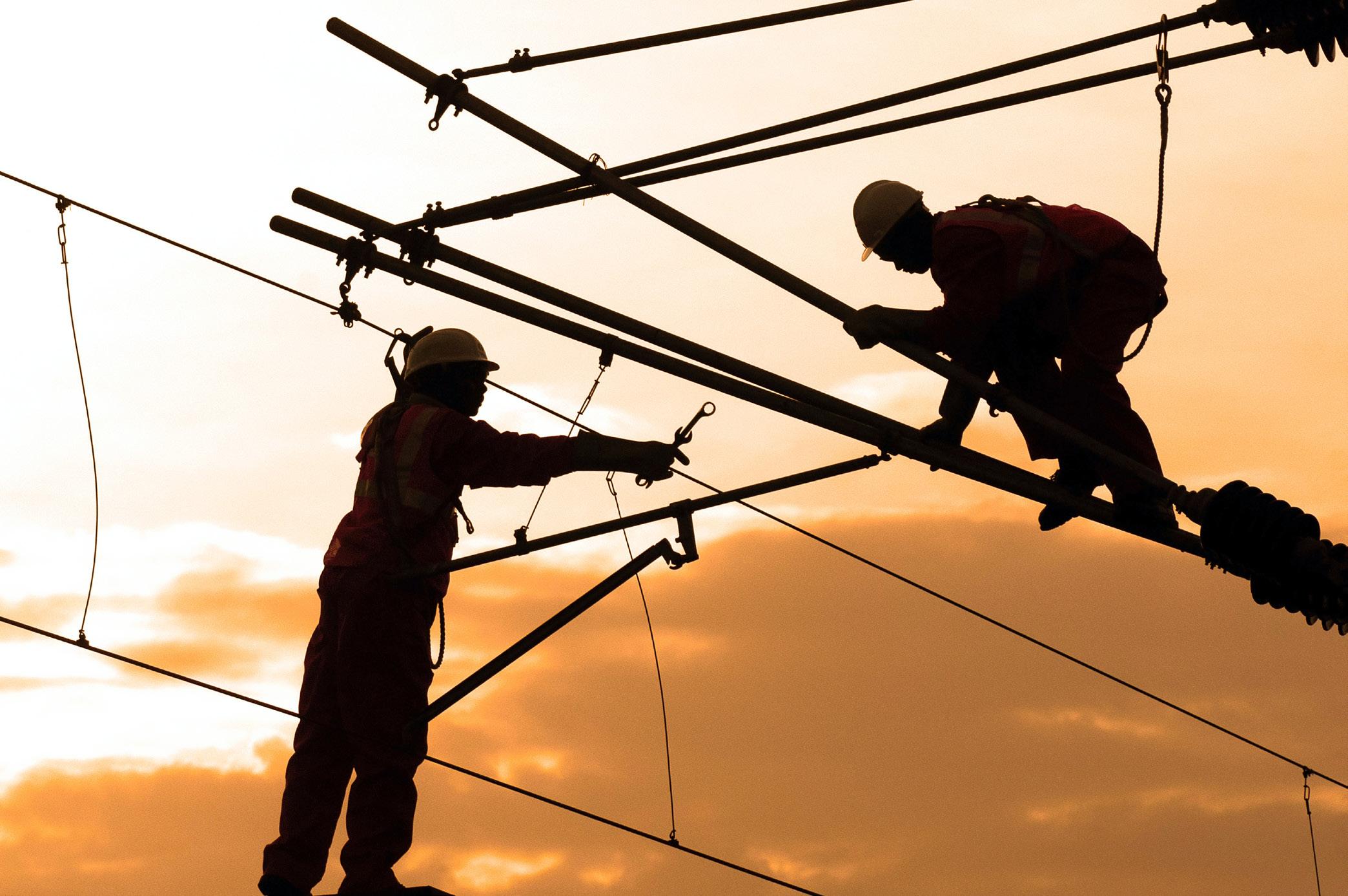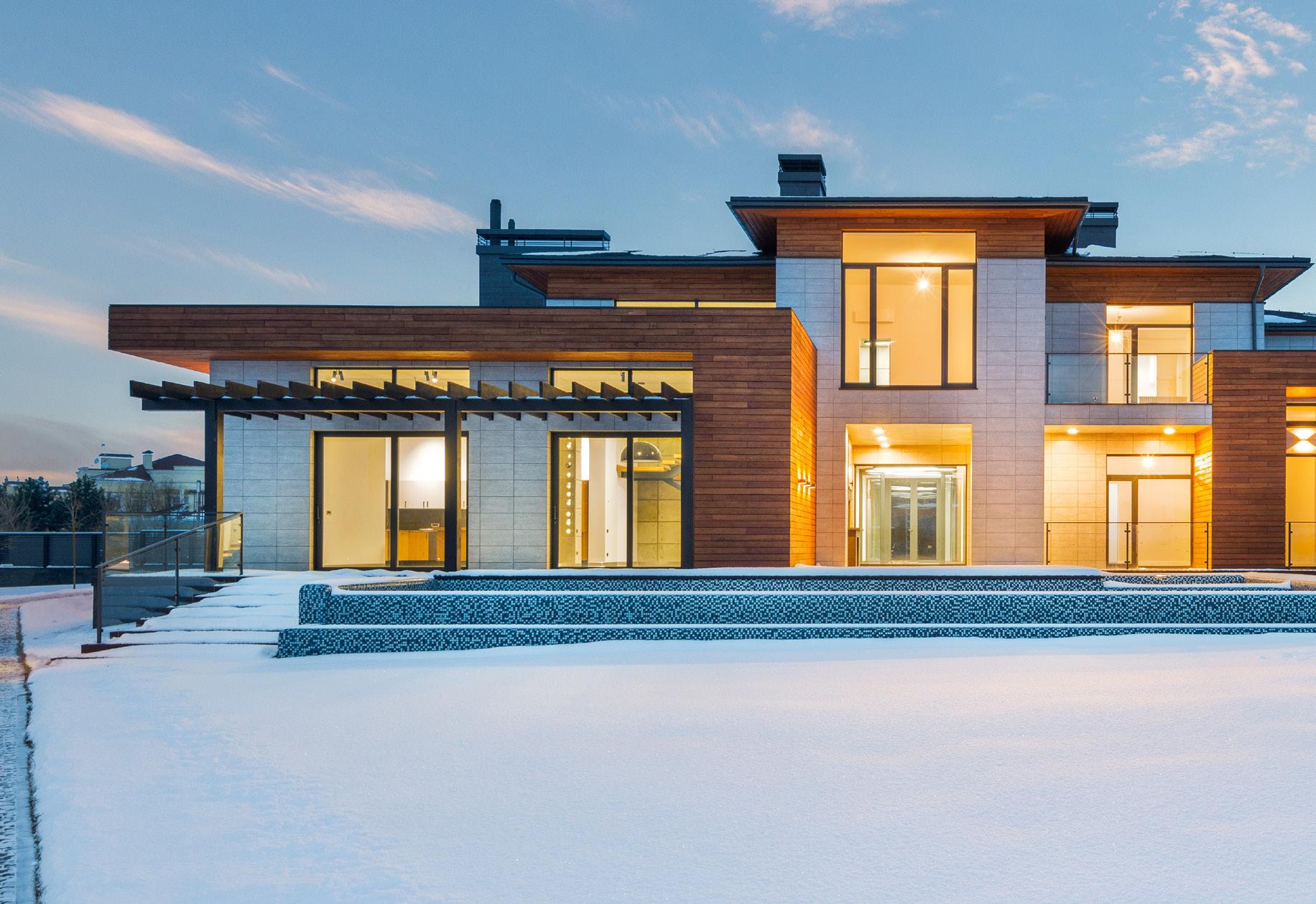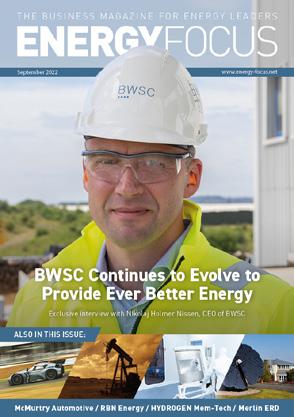INDUSTRY FOCUS: TRANSMISSION

//Lede is one of three whollyowned subsidiaries of Norwegian utility company Skagerak Energi, synonymous for many years with the production, sale and transmission of electric power and other energy. Delivering in excess of seven TWh annually, around 30% of this is put to use by large industrial customers principally in Grenland, with Telemark having been one of Norway’s most important industrial regions for centuries.
Lede operates an enormous 17,600 kilometres of power grids, both for regional and distribution applications and typically 132KV, and manages an employed capital

equivalent to NOK 5,127 million. With a name change in February last year, to separate the business from Skagerak Energi, Lede has been honing its craft since formation in January 2001.
Fiercely local and loyal to those who depend upon it for this most primary of needs, Lede’s employees are well known for recognising the fact that there must always be electricity for light and heat where its customers and residents live and work, and working
tirelessly to provide it. “That is why you often meet a Lede car on the road,” the company expands. “We are on duty 24 hours a day, 365 days a year, and as a result we are very well-known locally and always there when you need us.”
CULTURAL SHIFT
Lede is responsible for the maintenance, operation and construction of the grid, with around 400 employees covering every base
// WE ARE DRIVING DIGITALISATION AND ARE AMONG THE BEST IN NORWAY WHEN IT COMES TO USING DATA TO INFORM OUR DECISIONS //
4 / www.energy-focus.net
from customer service right through to the end product reaching the consumer through the cable. This holistic offering has been one key focus for CEO Øivind Askvik during his time in post, he informs us, shattering the status quo he felt had been allowed to endure.

“When I started at Lede, as is often the case with companies like us owned by municipalities or states, there was no focus on competition and therefore none on the customer - the only focus was inwards,” he relates. Askvik came into the CEO role in 2017, with a background in both army and navy for close to a decade before spending 15 years at leading engineering company ABB, in Norway
and Zurich and working globally.
“I wanted to take the company from this starting position and transform it to be completely customerorientated; my theory was, and remains, that since the customer does not have a choice as to their preferred operator, this should make us want and strive to be the best in Norway. That way, they get the most value, as we are taking the money that they are spending and using it in the best way possible - we
have to think as a private company and be efficient in all that we do.
“This required a major cultural change, and we have been on this ‘culture journey’ since 2019, which has seen us drastically improve our operational margins. We are driving digitalisation and are among the best in Norway now when it comes to using data to inform our decisions - to become a data-driven grid company is one of our main strategic targets.

// WE ARE ALREADY ONE OF THE TOP FIVE COMPANIES IN NORWAY FOR CONSISTENTLY REMAINING ONLINE AND RELIABLE //
www.energy-focus.net / 5
LEDE
RUTHLESS EFFICIENCY
“As a result, too, our guys in the field are becoming increasingly autonomous and able to do more and more independently, without the help of our administration office.” Askvik reveals, explaining that gradually this is all coming together in the form of tangible cultural and procedural shifts as well as in overall ways of working, leading to the company becoming more efficient and therefore delivering both more output and better results.
“We are constantly measured on efficiency in Norway, like all 105 power companies, from those that are very small to the very biggest.
The regulator uses a complex data model to essentially calculate the amount of money required by each player in order to be 100% efficient; to be below this is really not good, as it means an exponentially greater cost to the customer.”
It is a critical metric, Askvik explains, and everything implemented at Lede in recent years in clearly having massive positive reverberations.
“Exceeding this level of efficiency, on the other hand, is massively beneficial, giving the customer lower grid tariffs as well as more earnings for the owners. JUST THREE YEARS AGO WE WERE AT ROUGHLY

6 / istomakealsodifferentwww.energy-focus.net“Havingagileteamsdevelopingapplicationsforushasbeenkey,andcontinuingtotheshiftfromahierarchyateam-basedwayofworkingstillhighontheagenda.”
//
92% STANDSTODAYEFFICIENCY;THISFIGUREAT109%// INDUSTRY FOCUS: TRANSMISSION Continues on page 8
Safety, flexibility and autonomy for your colleagues in the field
tools which enable field workers to check the grid situation before they arrive. Empower them to plan out the work, test the changes virtually, and use preventative safety measures like disconnecting all nearby electric cars - all on their volue.com/sparktablet.

SPARKWearebuilding
we were
at in the region of 92% efficiency; today this figure stands at 109%.
“The changes over the last couple of years for us have been fairly monumental, and mean that currently we are number two in the top 12 Norwegian energy companies for efficiency,” Askvik offers. “Next year the goal is to improve that to lead the way, which we fully believe will happen if the industry develops in the way we have predicted.” Another aspect of Lede’s efficiency is avoiding downtime at all costs, Askvik stresses.
“We have come to realise just how dependent people are on electricity

for everything, both domestically and commercially, and we therefore are aiming to be online 100% of the time. This amount of uptime is incredibly expensive, due to the sheer amount of resources it necessitates, but currently we at 99.996% - the last remaining decimal point is incredibly difficult to wipe off, but we are getting there.
“We are already one of the top five companies in Norway for consistently remaining online and reliable.”
DECISIVE DIGITALISATION
Elaborating further on the question of digitalisation, and how it has been achieved at Lede, Askvik is clear. “It was implemented in stages,” he replies, “starting by combining
some of our own people, working in the field, and those from one of our external suppliers, from which we developed what we called the ‘Hero in the Field’ group. From this we have been able to build up a pool of data from which we can pick and put together applications relevant to different users in the company.
“Conversely to this approach, many companies still work from theoretical images, whereas we can now run the grid in a much better way. This technology is also allowing us to postpone our investment into a new grid and elongate the lifetime of the existing infrastructure, which is all incredibly exciting.” The two most important strategic drivers for
8 / Justwww.energy-focus.netthreeyearsago,in2019,
INDUSTRY FOCUS: TRANSMISSION Continued from page 6
Lede, and for the power distribution business as a whole, relate inarguably to the digital shift and the green shift. The digital shift encompasses all those elements already well under way at Lede, including artificial intelligence, the Internet of Things, big data, machine learning, robotics and, most lately, mobile solutions.

“As a leader, we know that we must be a socially responsible player in the energy industry,” underlines Askvik. “The company has environmental
considerations at the forefront of all its activities, and is seizing opportunities to contribute to society’s climate and environmental goals being reached within the areas we can influence.”
Electrification of the transport sector is of course well under way, with further major investment expected in the future, which will bring the need for the likes of Lede to facilitate electric car charging, train development and land current to ship, for starters. With solar and wind also widespread energy sources in Norway, as well as biomass, and vital to sustainable energy production is the effective connection of such power plants to the power grid.
“The rapid development of technology results in constantly falling costs for local production and storage of electricity,” Askvik assesses,
“which will lead to a new and more flexible use of the current power grid and result in an altogether more complicated network operation. This suits Lede down to the ground, as we target a future as a forwardlooking supplier of clean energy that contributes to social welfare, economic growth and development.
“We will think new thoughts, develop opportunities and create solutions, using our knowledge and experience to reach ambitious goals and be recognised as a leader in our industry.”
WWW. LEDE.NO www.energy-focus.net / 9 // WE WILL THINK NEW THOUGHTS, CREATEOPPORTUNITIESDEVELOPANDSOLUTIONS// LEDE


Published by CMB Media Group Chris Bolderstone – General Manager E. T.Pottergate,Kilnchris@cmb-media.co.ukHouse,FuelStudios,NorwichNR21DX+44(0)1603855161 www.cmb-media.co.uk CMB Media Group does not accept responsibility for omissions or errors. The points of view expressed in articles by attributing writers and/ or in advertisements included in this magazine do not necessarily represent those of the publisher. Any resemblance to real persons, living or dead is purely coincidental. Whilst every effort is made to ensure the accuracy of the information contained within this magazine, no legal responsibility will be accepted by the publishers for loss arising from use of information published. All rights reserved. No part of this publication may be reproduced or stored in a retrievable system or transmitted in any form or by any means without the prior written consent of the publisher. © CMB Media Group Ltd 2022 AS FEATURED IN ENERGY FOCUS SEPTEMBER 2022
